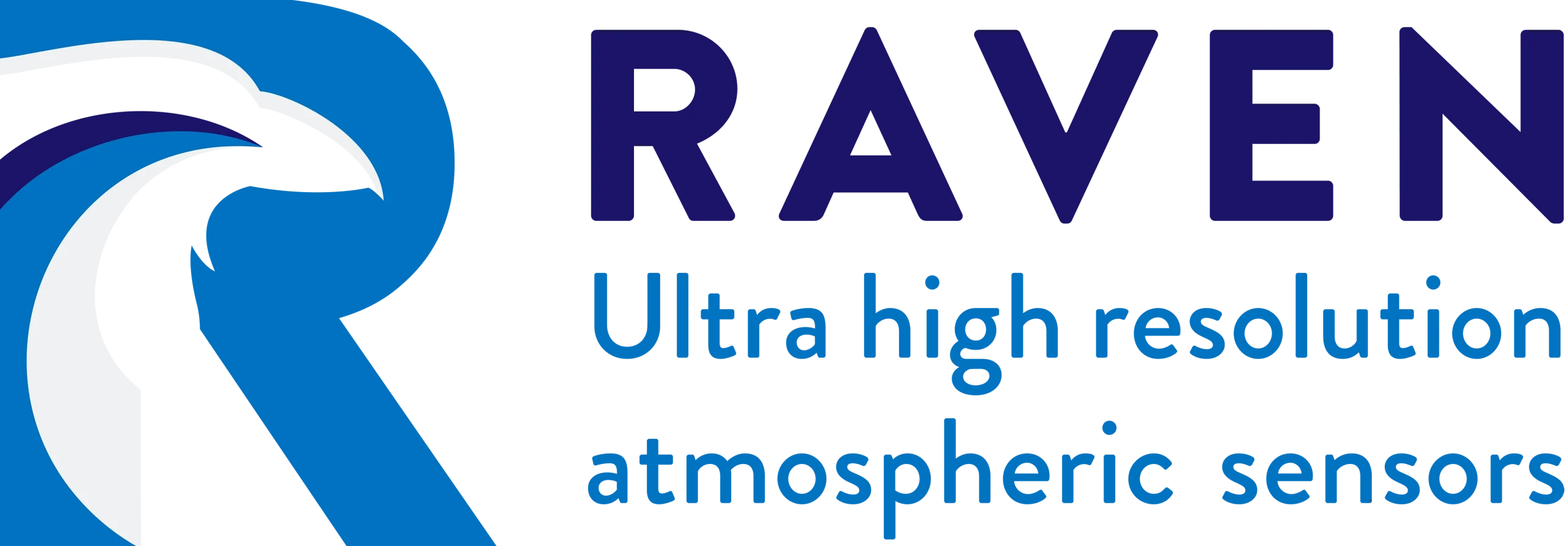Click on the images below to read short interviews with our RAVEN team members to learn more about their role in the project and their thoughts on novel sensing technologies, European collaborative projects, and more.
Meet RAVEN Researchers
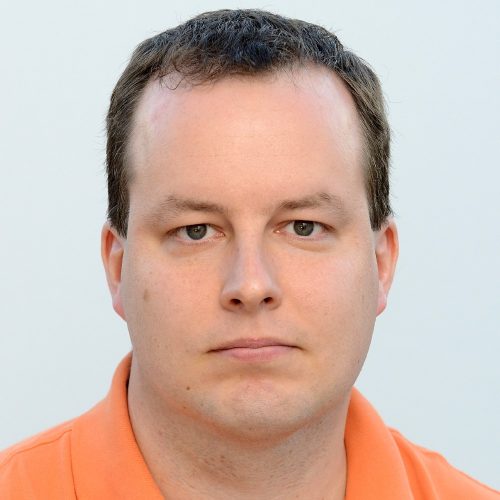
What is your role within the project, and how does it contribute to the development of the sensors?
My role is to test the developed sensor when it is ready for that. More precisely, test how the sensor performs in terms of accuracy, precision and stability expectations.
Tell us a bit more about the organisation/company you work at.
The Finnish Meteorological Institute observes and researches the atmosphere, from the ground/sea level to the near space. I am working in the Greenhouse Gases research group, where we study greenhouse gas concentrations and their exchange between the atmosphere and different ecosystems.
In your opinion, what sets the RAVEN project apart from other air quality monitoring initiatives?
Commercially available environmental sensors are often built by private companies exploiting scientific research. Now, we have here a broad set of people from different backgrounds and talents, from optical researchers via companies to sensor end-users.
What do you expect to achieve from participating in RAVEN?
I have never “seen” inside a gas sensor in such detail. How the development starts form light sources and detectors level and what kind of expertise will be needed before the first working individual sensor is ready.
What kind of real-world applications or industries do you think will benefit the most from RAVEN technology?
I can see a broad group of end users for Ravem sensors. Less expensive sensors are needed in developing countries especially, but they also make it possible to have observations with low thresholds anywhere. Light sensors, in addition, are in demand, for example, in wearable technology (personal exposure monitoring) and remote sensing (drones and other UAVs).
What do you think the main economic, societal, or environmental benefits of the project will be?
If monitoring of greenhouse gases and gas phase pollution were less expensive and more reliable, the effects would be impressive. A more accurate understanding of climate change and the state of the environment would help speed up decision-making and target actions to the most efficient ones.
What advice would you give to young researchers who want to work on environmental monitoring technologies?
A broad background in natural sciences and biology helps to understand very complex processes. And if you expect to achieve fast solutions, forget it—long-term work is the way to success.
What do you think EU collaborative research projects have to offer?
EU funding enables large consortiums, where wide expertise makes it possible to develop something fundamentally different and new.
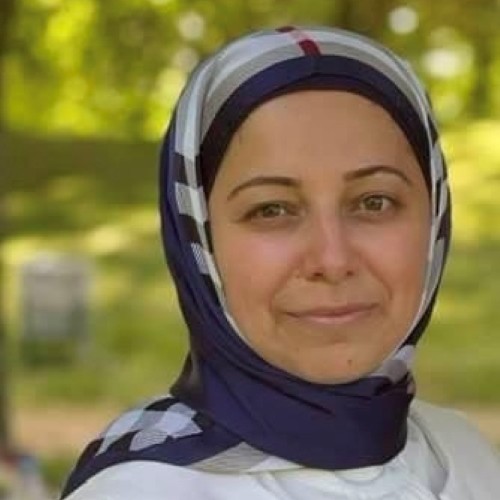
What is your role within the project, and how does it contribute to the development of the sensors?
I am an R&D engineer in the IoNext team at Teem Photonics, and in this project, we will provide the optical assembly and packaging of the straight and spiral waveguides with the VIS-SWIR sensor. Teem will also implement the fluidic functions.
Tell us a bit more about the organisation/company you work at.
Teem Photonics manufactures custom photonic integrated circuits (PICs) based on its reliable, versatile and cost-effective ioNext platform and provides innovative solutions for integrated photonic packaging.
In your opinion, what sets the RAVEN project apart from other air quality monitoring initiatives?
The advantages of the RAVEN sensors compared to the other air sensors will be portability (low weight and size), low power consumption, and the ability to measure multiple gases across a broad wavelength range with high sensitivity and selectivity at a low cost. No other system will be able to combine all these features into the same single product.
What do you expect to achieve from participating in RAVEN?
The sensor chips will be added to Teem’s portfolio to demonstrate our expertise and strengthen our position in the photonics market. On the other hand, our participation in RAVEN will contribute to the development of relationships with academic research institutions.
What kind of real-world applications or industries do you think will benefit the most from RAVEN technology?
The technology that will be developed in this project will expand the application domain beyond environmental gas sensing to markets like gas sensor integration in smart home appliances.
What do you think the main economic, societal, or environmental benefits of the project will be?
The new components that will be developed by RAVEN, such as miniaturized light sources, photonic sensors and quantum-inspired on-chip data processing, will help reduce Europe’s reliance on imported sensing systems. In addition, these sensors will contribute to cleaner air, better health outcomes, better industrial performance and a more sustainable future.
What advice would you give to young researchers who want to work on environmental monitoring technologies?
Young researchers working on environmental monitoring technologies have a unique opportunity to contribute to solving critical global challenges. By building technical expertise, collaborating across disciplines, staying engaged with policy and industry, and focusing on real-world impact, they can play a significant role in advancing sustainable solutions for environmental protection.
What do you think EU collaborative research projects have to offer?
EU collaborative research projects offer a rich ecosystem of opportunities for innovation, knowledge exchange, and cross-border cooperation. They not only advance science and technology, but also address pressing societal and environmental challenges, influence policy, and contribute to economic growth. For researchers, industry players, and policymakers, these projects provide a unique platform to engage in impactful, future-oriented research that benefits the entire European community and beyond.

What is your role within the project, and how does it contribute to the development of the sensors?
My position at Vigo Photonics is Expert Epitaxy Engineer, specialising in MOCVD growth of compound semiconductor heterostructures. As Project Tech Lead at Vigo Photonics, I will be responsible for the development of the photodetector from bandgap engineering to ensuring that the chip is properly integrated into the system.
Tell us a bit more about the organisation/company you work at.
Vigo Photonics is a Polish company founded about 30 years ago by Professor Józef Piotrowski and his students from the Military University of Technology. We manufacture infrared photodetectors for various applications. We are unique in some of the technologies developed by our engineers, such as monolithic immersion lenses. Our speciality for many years has been medium and long wavelength photodetectors for high operating temperatures. In recent years, we have decided to move into manufacturing a wide range of photonic devices. We see the future of the company in photonic integrated circuits.
In your opinion, what sets the RAVEN project apart from other air quality monitoring initiatives?
Air monitoring based on photonic integrated circuits could be a scalable technology that could enable mass production of such a system. This would make it possible to monitor air quality in real-time in many places so that the source of harmful gases can be detected immediately. The miniaturisation of the air quality monitoring system will allow it to be used in places where it is impossible to monitor air quality.
What do you expect to achieve from participating in RAVEN?
I expect to learn about state-of-the-art sensors using photonic integrated circuits (PICs) that can revolutionise air quality and greenhouse gas (GHG) monitoring. Being part of this project is very fulfilling because of its positive impact on the environment.
What kind of real-world applications or industries do you think will benefit the most from RAVEN technology?
Local pollution control authorities, offshore platforms, energy industry, pipeline leak detection, automotive, chemical industry, and agricultural operations, especially those involving livestock or fertiliser use.
What do you think the main economic, societal, or environmental benefits of the project will be?
Economic: Enabling more widespread use of monitoring solutions without the need for expensive equipment and infrastructure will reduce the cost of adopting green practices.
Social: Pubic health by improved air quality.
Environmental: Reduction of GHG, pollution detection.
What advice would you give to young researchers who want to work on environmental monitoring technologies?
Focus on learning and understanding rather than results and scores. Find a place where you can develop as a researcher and be patient, everyone can make a difference.
What do you think EU collaborative research projects have to offer?
Participation often includes access to world-class research infrastructure, including laboratories, technology platforms, and computational resources across Europe. EU collaborative projects focus on solving major societal and environmental problems. By working on a continental scale, these projects ensure that solutions are more robust, impactful and scalable.

What is your role within the project, and how does it contribute to the development of the sensors?
I am Group Leader and Ikerbasque Research Professor for Nanoengineering at CIC nanoGUNE. In our group, we will develop predictive models based on AI for specific gases in the atmosphere, using photonic data provided by the RAVEN partners. I will coordinate the data analysis part, both internally with a postdoc and a PhD student and as an interface to other RAVEN partners. Due to my personal background in optics, photonics and data analysis, I will support the project scientifically with my experience in this field and my understanding of the structure of photonic data.
Tell us a bit more about the organisation/company you work at.
CIC nanoGUNE is a private non-profit research center in the Basque Country of Spain, dedicated to nanoscience and technology. In addition to conducting nanoscience research in various fields of physics, chemistry and biology, nanoGUNE’s mission is also to promote the local and national economy through technology transfer. The research of the Nanoengineering Group for which I am responsible for, includes photonics and plasmonics in combination with nanotechnology, biomedical engineering, and artificial intelligence, mainly for applications in medical diagnostics, food quality control, and environmental monitoring.
In your opinion, what sets the RAVEN project apart from other air quality monitoring initiatives?
RAVEN differs from other initiatives in several aspects: We will develop highly integrated photonic circuits, combine multiple photonic methods, and apply machine learning including data fusion to better exploit the multi-parametric and complementary information encoded in the data from different sources. In addition, we will have a fully integrated autonomous system for atmosphere monitoring, including on-chip computing.
What do you expect to achieve from participating in RAVEN?
RAVEN helps me to expand my scientific network and will give us the opportunity to apply our machine learning methods to a new field of research, namely the monitoring of pollution and trace gases in the atmosphere. The project will broaden our field of research and I expect that we will gain new insights with completely different hierarchical data structures.
What kind of real-world applications or industries do you think will benefit the most from RAVEN technology?
The miniaturized photonic monitoring technology developed for real-time and on-chip-calculated predictions has the potential to access numerous areas, such as medical diagnostics and monitoring, energy supply optimization, food quality control, agriculture or the exploration of extraterrestrial areas.
What do you think the main economic, societal, or environmental benefits of the project will be?
RAVEN technology has the potential to significantly address societal challenges and will help control environmental pollution, develop new environmentally friendly technologies for aviation, and revolutionize agriculture and health monitoring.
What advice would you give to young researchers who want to work on environmental monitoring technologies?
Do it, regardless of other opinions! In the end, this will be the key to changing the global challenges. Without new and innovative surveillance technologies, no significant changes can be achieved.
What do you think EU collaborative research projects have to offer?
These projects must offer less bureaucratic opportunities to efficiently and effectively promote new technologies, gain new knowledge, and strengthen Europe-wide networking in a globally competitive world.
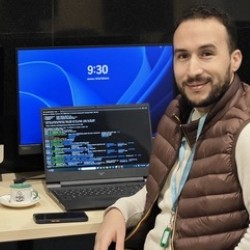
What is your role within the project, and how does it contribute to the development of the sensors?
I am postdoctoral researcher at Center CIC nanoGUNE in the nanoengineering group, my role in this project focuses on managing our tasks, supervising a PhD student, and propose multivariate data analysis with machine learning algorithms to analyse VIS-SWIR and MIR sensor data, ensuring accurate detection of atmospheric gases.
Tell us a bit more about the organisation/company you work at.
CIC nanoGUNE is a private non-profit research center in the Basque Country of Spain, dedicated to nanoscience and technology. In addition to conducting nanoscience research in various fields of physics, chemistry and biology, nanoGUNE’s mission is also to promote the local and national economy through technology transfer.
In your opinion, what sets the RAVEN project apart from other air quality monitoring initiatives?
Nowadays sensors are bulky, expensive, commonly measure one or a few analytes, and frequently require shelter and mains power. RAVEN will design and develop two innovative and complementary compact and cost-effective sensors for continuous gas analysis across a wide range of wavelengths, allowing the detection and measurement of many analytes with high sensitivity, accuracy, and precision.
What do you expect to achieve from participating in RAVEN?
Participating in RAVEN project will offer me many opportunities such as expertise advancing data analysis specially for photonic data, and collaborate with leading experts from different fields, and contribute to real-time, energy-efficient, and high-accuracy sensor systems for environmental monitoring.
What kind of real-world applications or industries do you think will benefit the most from RAVEN technology?
By integrating miniaturized, energy-efficient, and AI-driven photonic sensors, RAVEN will offer solutions for a wide range of applications, such as environmental monitoring, industrial safety and emissions control, healthcare, agriculture, and food quality control.
What do you think the main economic, societal, or environmental benefits of the project will be?
The RAVEN project will bring significant economic, societal, and environmental benefits, including cost-effective sensing solutions, improved public health, and enhanced climate monitoring.
What advice would you give to young researchers who want to work on environmental monitoring technologies?
I would like to advise young researchers who want to work on environmental monitoring technologies to master photonics, AI, and sensor technology to develop innovative monitoring solutions and engage with research networks and industry partners to stay ahead in this evolving field.
What do you think EU collaborative research projects have to offer?
EU projects bring together top researchers, industries, and institutions to tackle complex challenges with advanced technologies.
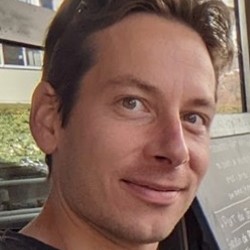
What is your role within the project, and how does it contribute to the development of the sensors?
My role within the RAVEN project is to implement system integration strategies, validation methodologies, and qualification approaches for lab and real-case deployments. I have to ensure that the developed photonic chips not only work in lab conditions but also meet real-world operational requirements, with an emphasis on dissolved gas measurements.
My work is to ensure that the RAVEN sensors are reliable, practical, and ready for deployment.
Tell us a bit more about the organisation/company you work at.
A2 Photonic Sensors is a French company specializing in the development and fabrication of advanced sensing technologies. The company focuses on designing and manufacturing high-performance solutions for various applications, mostly for environmental monitoring.
In your opinion, what sets the RAVEN project apart from other air quality monitoring initiatives?
The RAVEN project stands out by leveraging photonic integrated circuits (PICs) to develop compact, high-performance gas sensors. It will enable multi-gas detection with ultra-low detection limits. Unlike bulky, power-hungry systems, RAVEN’s miniaturized sensors will be versatile, portable and cost-effective.
What do you expect to achieve from participating in RAVEN?
By participating in the RAVEN project, we at A2 Photonic Sensors aim to contribute to the development of novel multi-gas sensors that surpass current commercial solutions. We would also be glad to expand our knowledge in photonic-based gas sensing, positioning A2 Photonic Sensors at the forefront of next-generation environmental monitoring solution. Last but not least, we take pride in participating in a project that supports the reduction of air pollution by enabling accurate, widespread air quality monitoring.
What kind of real-world applications or industries do you think will benefit the most from RAVEN technology?
RAVEN’s advanced gas sensors will benefit industries requiring precise air quality monitoring. Industrial sectors like manufacturing, energy, and chemical processing can use them for emissions control and regulatory compliance. Agriculture will benefit from tracking greenhouse gases, while transportation can monitor vehicle emissions. Additionally, we hope that indoor air quality will improve through better detection of harmful pollutants.
What do you think the main economic, societal, or environmental benefits of the project will be?
Improved public health is one of the key benefits of the project. Overall, I hope RAVEN technology will drive cleaner industries, healthier societies, and a more sustainable future.
What advice would you give to young researchers who want to work on environmental monitoring technologies?
My advice would be to get hands-on experience: work on real-world projects, internships, or lab research to understand sensor development, integration, and validation. Participate in field studies to see how environmental data is collected and analysed. That way, you will be able to make a difference.
What do you think EU collaborative research projects have to offer?
EU collaborative research projects provide funding and a strong network of experts across disciplines. By combining resources and expertise, EU projects accelerate research impact, ensuring solutions to key problems are efficiently developed while strengthening Europe’s leadership in science and technology.
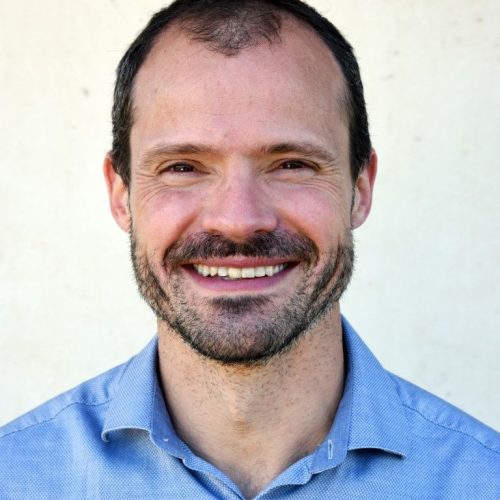
What is your role within the project, and how does it contribute to the development of the sensors?
I will prepare reference samples, representative of those found in case of accidental conditions, to support technical validation of the VIS-SWIR sensor. In collaboration with scientists and technology developers, I will share the expectations of end-users and conduct experiments to test the sensors throughout their development.
Tell us a bit more about the organisation/company you work at.
Cedre is an independent not-for-profit organisation and has proven to be a key stakeholder over the past 40 years at an international level through its R&D and its extensive field experience acquired during major spills. Cedre is a multidisciplinary team made up of 50 technicians, engineers and PhDs organised around five activities: response support, planning, training, analysis and testing, and research.
In your opinion, what sets the RAVEN project apart from other air quality monitoring initiatives?
RAVEN will significative enhance detection capacities in the air. Leveraging cutting-edge technology based on photonic integrated circuits (PIC), RAVEN sensors dramatically improve performance and expand deployment possibilities, enabling in-situ measurements even in harsh conditions, such as those encountered during accidental pollution events.
What do you expect to achieve from participating in RAVEN?
I am excited to be part of a project consortium dedicated to enhancing the detection capabilities of airborne chemicals.
What kind of real-world applications or industries do you think will benefit the most from RAVEN technology?
Referring to my current position in the field of accidental pollution, RAVEN sensors will clearly broaden gas detection capacities. In a general manner, all industries for which very early detection is required will be interested in this technology.
What do you think the main economic, societal, or environmental benefits of the project will be?
Detection of pollutants in the air is a key issue that has to be improved. Thanks to miniaturized multiple gas sensors, the RAVEN project will help to improve early detection and prevent further damages for incident-related cases. For scientific purposes, the RAVEN project will help to understand GHG natural emissions and sinks as well.
What advice would you give to young researchers who want to work on environmental monitoring technologies?
New technologies based on photonic integrated circuits (PIC) offer promising possibilities for environmental applications. I would encourage young researchers moving forward, as there is a clear path for exciting projects that protect and sustain the natural environment.
What do you think EU collaborative research projects have to offer?
In Europe, we have world-class scientists and advanced technologies. The synergy created by collaborative research projects enhances our efficiency, especially in addressing urgent environmental challenges.
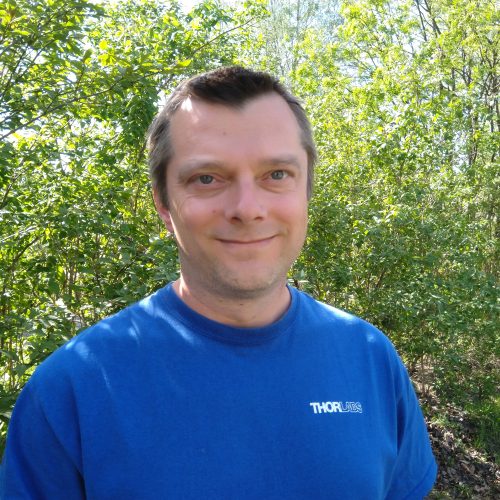
What is your role within the project, and how does it contribute to the development of the sensors?
I am the coordinator of the RAVEN project, and I lead the WP3 in which we develop an optical data processing chip. This integrated optic device will serve to analyse the optical signals sent from the sensing head developed in WP2.
Tell us a bit more about the organisation/company you work at.
I work in the Integrated Optics & Sensing group of the Center for Photonics Sciences at the University of Eastern Finland, in Joensuu. The University of Eastern Finland is the most multidisciplinary university in Finland. Our high standard of interdisciplinary research and education respond to global challenges and build a sustainable future. Our research is ranked among the best in the world in several fields. We offer education in nearly 100 major subjects and we train experts for tomorrow’s changing labour market needs. UEF counts 3200 employees, 17000 students, and 14500 adult education students on two campuses (Kuopio and Joensuu). The integrated Optics & Sensing group focuses on three main topics: 1) smart waveguides to explore new possibilities of integration at lower costs, 2) surface waves (plasmonics and dielectric surface waves) for sensing, 3) applications to environmental monitoring.
In your opinion, what sets the RAVEN project apart from other air quality monitoring initiatives?
RAVEN aims at a broad set of gases to be analysed at once and at very low concentration. Although we target some specific gases, the concept can be extended to many others.
What do you expect to achieve from participating in RAVEN?
In addition to the opportunity of being part of an impressive network of professional with long experience in the domain, I would like to see some real application of on-chip computing for the benefit of mankind.
What kind of real-world applications or industries do you think will benefit the most from RAVEN technology?
Individual housing, industry, cities, all can benefit from RAVEN since it will enable new path for monitoring atmosphere at very high-level of accuracy. Each of the 5 chips developed in RAVEN can be seen as a separate device that can be commercialize. Therefore, in addition to monitoring, fields such as spectroscopy, optical computing, and telecommunications can benefit from RAVEN.
What do you think the main economic, societal, or environmental benefits of the project will be?
The scientific impact of RAVEN on environment is clear: we aim at a cleaner world. From societal point of view, we hope that dissemination of the results will help people and decision makers understanding that something must be done to clean the world.
What advice would you give to young researchers who want to work on environmental monitoring technologies?
It is a long road full of challenges and obstacle, but the goal is worth the effort. Keep the motivation and go ahead.
What do you think EU collaborative research projects have to offer?
There is no research without collaboration, EU move towards environmental research is great and multidisciplinary research as we do in RAVEN is very important.
